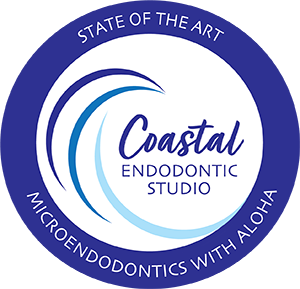Endodontic FAQ's
FREQUENTLY ASKED QUESTIONS
Endodontics is a branch of dentistry recognized by the American Dental Association involving treatment of the pulp (root canal) and surrounding tissues of the tooth. When you look at your tooth in the mirror, what you see is the crown. The rest of the tooth, the portion hidden beneath the gum line, is called the root. Though the outer portion of the root is a hard tissue called dentin, the inside channel or “root canal” contains a pulp of soft tissue, blood vessels and nerves. Bacteria that are introduced into the pulp as a result of tooth decay, periodontal disease, tooth fracture or other problems, can severely damage the pulp. When that happens, an endodontic specialist removes the diseased pulp to save the tooth and prevent further infection and inflammation. After successful endodontic treatment, the tooth continues to perform normally.
No. While x-rays will be necessary during your endodontic treatment, we use an advanced non-film computerized system, called digital radiography, that produces radiation levels up to 90 percent lower than those of already low dose conventional dental x-ray machinery. These digital images can be optimized, archived, printed and sent to referring doctors via e-mail.
Again, there’s no need for concern. We adhere to the most rigorous standards of infection control advocated by OSHA, the Centers for Disease Control and the American Dental Association. We utilize autoclave sterilization and barrier techniques to eliminate any risk of infection.
When your root canal therapy has been completed, a record of your treatment will be sent to your restorative dentist. You should contact his office for a follow-up restoration within a few weeks of completion at our office. Your restorative dentist will decide on what type of restoration is necessary to protect your tooth. It is rare for endodontic patients to experience complications after routine endodontic treatment or microsurgery. If a problem does occur, however, we are available at all times to respond.
OPERATING MICROSCOPES & 3D CONE BEAM TECHNOLOGY:
Coastal Endodontic Studio is a practice where all dental procedures, no matter how simple, are done under an operating microscope for better visualization and outcome. Magnification and fiber optic illumination are helpful in aiding the doctor to see tiny details inside your tooth. Also, a camera on the operating microscope can record images of your tooth to further document the doctor’s findings.
We also use Cone Beam 3D technology – specialized imaging equipment which provides clear, three-dimensional images of your teeth, soft tissues, nerve pathways and bone in a single scan.
It’s like a GPS for the root and anatomy of the tooth.
Using these technologies allows for faster and more accurate diagnosis, better treatment plans, as well as enhanced ability to retain teeth otherwise slated for extraction.
Sometimes a traditional x-ray can be very limiting in its level of diagnosis. We use the 3D Cone Beam imaging in order to increase the visualization of the area we are treating. Often we can find undetected infection and canals, which may be a reason a previously treated root canal was failing. With Cone Beam use, we can find that etiology and treat that exact area so a root canal does not continue to fail and the tooth is saved.
